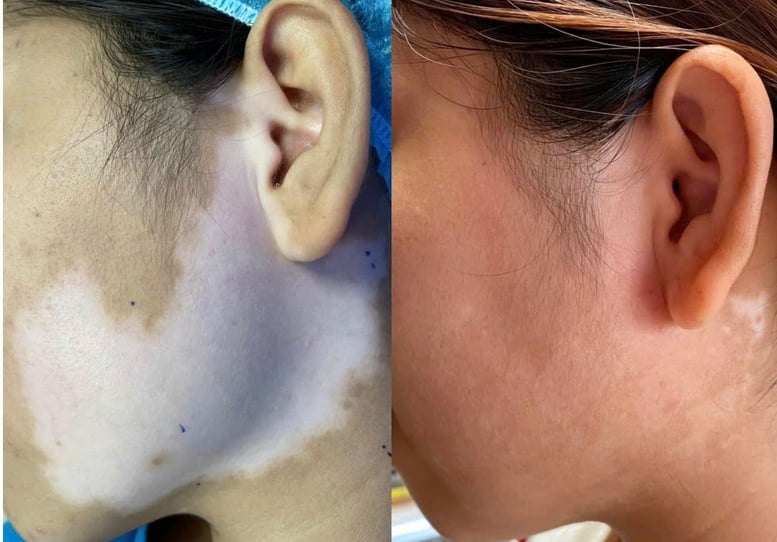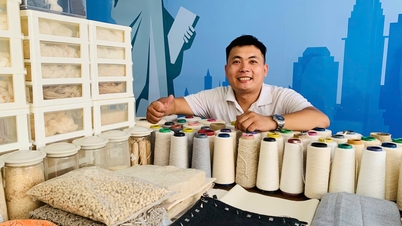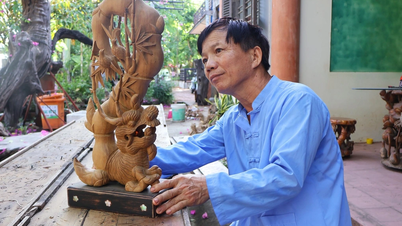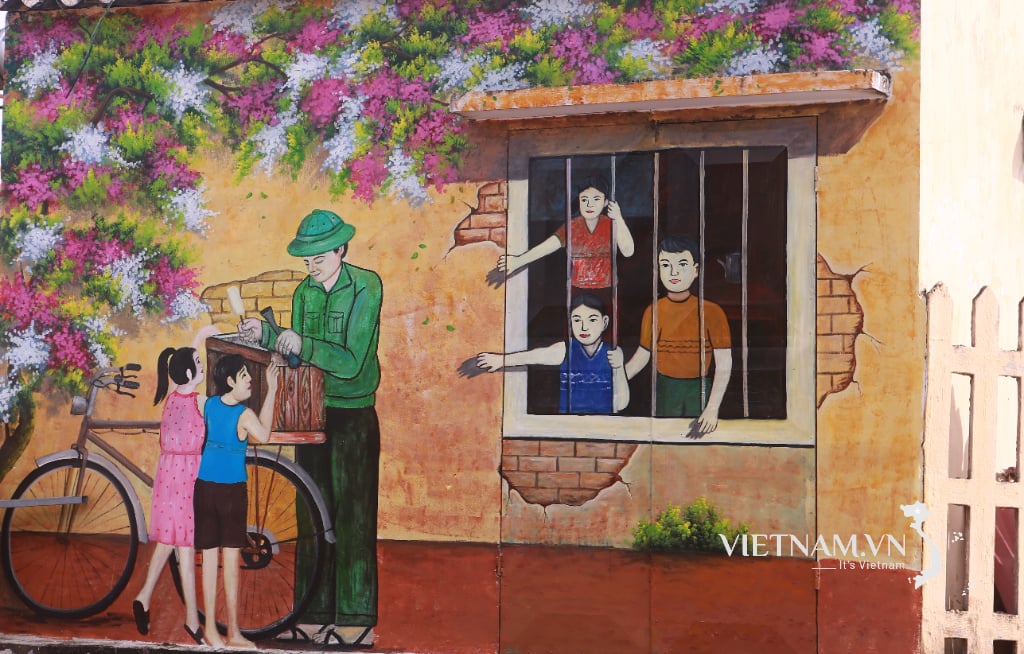On the occasion of World Vitiligo Day (June 25), Dr. Hoang Van Tam, Hanoi Medical University, shared new information about this disease as well as current advances in diagnosis and treatment.
Speaking to the Government Electronic Newspaper reporter, Dr. Hoang Van Tam said that vitiligo is a common skin disease in which skin pigment cells are destroyed and change skin color.

Dr. Hoang Van Tam examines a patient
The disease greatly affects the quality of life.
Vitiligo has long been classified as a benign disease, however, the psychological impact it brings to patients is not small. Many patients fall into a state of anxiety and lack of confidence for a long time just because of the patchy, depigmented skin areas, greatly affecting the quality of life of the patient.
Doctor, what causes vitiligo?
Dr. Hoang Van Tam : Up to now, medicine has not yet determined the exact cause of this disease. However, there are many factors that are believed to be involved such as: genetics, autoimmune mechanisms (when the body attacks its own melanocytes) and environmental factors such as viruses, chemicals, stress...
In particular, people with autoimmune diseases such as systemic lupus erythematosus, scleroderma, thyroid disorders... will have a higher risk of getting the disease than others.
What is the current incidence of this disease in the world and in Vietnam, doctor?
Dr. Hoang Van Tam: The world records 0.5-2% of the population suffering from vitiligo. The higher incidence is often seen in countries with dark skin such as India. The disease occurs at all ages.
In Vietnam, there are no official statistics, but according to my clinical experience, the disease usually starts between the ages of 10 and 30 and women tend to get this disease more than men.

Vitiligo affects 0.5-2% of the world's population
Many advances in disease treatment
Currently, how difficult is vitiligo treatment and what progress has there been, doctor?
Dr. Hoang Van Tam : Previously, vitiligo treatment mainly used topical medications, which were ineffective and prone to recurrence. Many vitiligo patients were disappointed because treatment was ineffective for a long time.
However, in recent years, dermatology has recorded many significant advances in the treatment of vitiligo, bringing new hope to patients after a long period of treatment with ineffective methods.
Nowadays, light therapies such as narrow-spectrum UVB, Excimer laser and solid-state UVB laser are widely used, which can restore pigmentation more effectively.
It is known that you are the first person to apply autologous epidermal cell transplantation technology to treat vitiligo in Vietnam. How do you evaluate the development of this method up to now?
Dr. Hoang Van Tam : Autologous epidermal cell transplantation is one of the most advanced treatments for vitiligo today. When this technology was introduced to Vietnam in 2020, it was still a completely new technique.
Up to now, after nearly 5 years of implementation, we have recorded clear effectiveness, especially in cases of long-term depigmentation. This method is increasingly perfected, safe and brings sustainable effectiveness.
In particular, through the practice of treating many patients, we have found that pigmentation recovers faster, most clearly on the face and body. This is a suitable solution for cases that do not respond to traditional methods.
This method often combines UVB irradiation, fractional CO2 laser, topical medications, oral medications, and autologous epidermal cell transplantation. Thanks to this, many patients achieve over 90% pigmentation recovery after only 4-6 months of treatment.
Golden time to treat vitiligo
World Vitiligo Day June 25 is an occasion to raise public awareness of this disease. What recommendations do doctors have for people in disease prevention, early detection, and early treatment for maximum effectiveness?
Dr. Hoang Van Tam: World Vitiligo Day, June 25, is not only an opportunity to spread positive messages but also to raise public awareness that vitiligo is not an infectious disease or “incurable”. It is important that patients seek advice from specialists, avoid self-treatment or waiting, leading to missing the “golden period” for intervention.
The golden stage of treating vitiligo is when the disease has not spread, the lesions are still new and the patient is young and in good health. At this stage, treatment can be more effective, helping to restore skin pigmentation better and prevent the disease from spreading.
Therefore, the earlier vitiligo is detected and treated, when the white patches have just appeared and have not spread, and modern technology is applied in treatment, the higher the possibility of restoring pigmentation. Patients will recover faster and be more confident in life.
For older patients, the longer the duration of the disease, the lower the response to treatment.
Thank you!
Hien Minh (performed)
Source: https://baochinhphu.vn/can-benh-pho-bien-chiem-den-2-dan-so-the-gioi-10225062417554552.htm



![[Photo] General Secretary To Lam works with the Standing Committee of Quang Binh and Quang Tri Provincial Party Committees](https://vphoto.vietnam.vn/thumb/1200x675/vietnam/resource/IMAGE/2025/6/25/6acdc70e139d44beaef4133fefbe2c7f)

![[Photo] First training session in preparation for the parade to celebrate the 80th anniversary of National Day, September 2nd](https://vphoto.vietnam.vn/thumb/1200x675/vietnam/resource/IMAGE/2025/6/25/ebf0364280904c019e24ade59fb08b18)

![[Photo] More than 124,000 candidates in Hanoi complete procedures for the 2025 High School Graduation Exam](https://vphoto.vietnam.vn/thumb/1200x675/vietnam/resource/IMAGE/2025/6/25/fa62985b10464d6a943b58699098ae3f)































































































Comment (0)